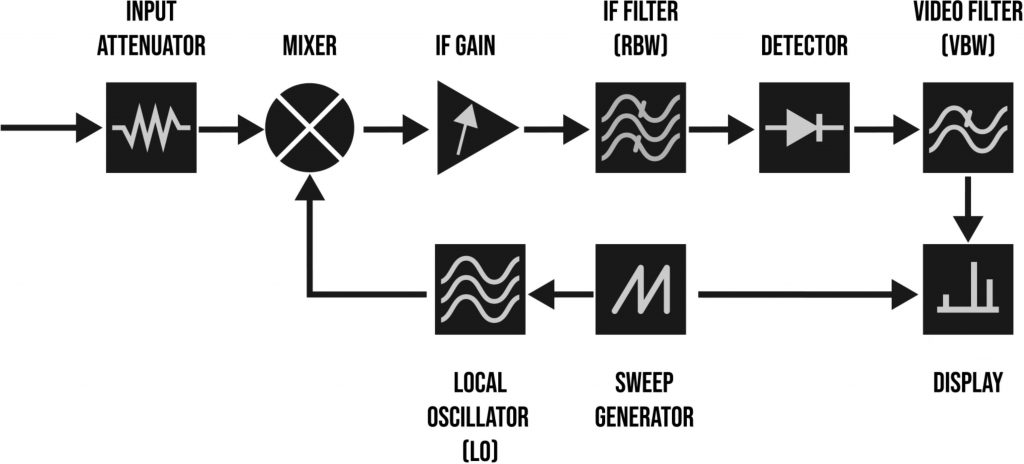A spectrum analyzer displays signals in the frequency domain. To use one, you only need to know about four controls: reference level, center frequency, and resolution bandwidth. In this episode, see how to use a spectrum analyzer and determine the transmitting frequency of a device.
The example device is my microphone transmitter. It operates around 500 MHz with FM modulation. You’ll see how I step through the spectrum analyzer controls to find the exact frequency. At the end of the episode, I show some advanced measurements you can do with a modern spectrum analyzer. My favorite one is the demodulation.
Using a “zero span,” it is possible for a spec an to demodulate an FM or AM signal. In my case, I used a HackRF SDR to generate an RF signal modulated by a wave file. (You’ll have to watch the episode to hear an easter egg!) After the spectrum analyzer down converts and demodulates the signal, it plays the audio through its speaker.
The block diagram might look familiar if you know a heterodyne receiver’s architecture. The two designs are very similar. The difference is the spec an has a sweep generator that automatically tunes the local oscillator. (I explain in more detail in the video.)
The spec an I used in the episode is my R&S FPC1500. You can read my FPC1500 review here. Technically it is a one-port network analyzer, but I only used the spectrum mode in the video.
See show notes on element14


